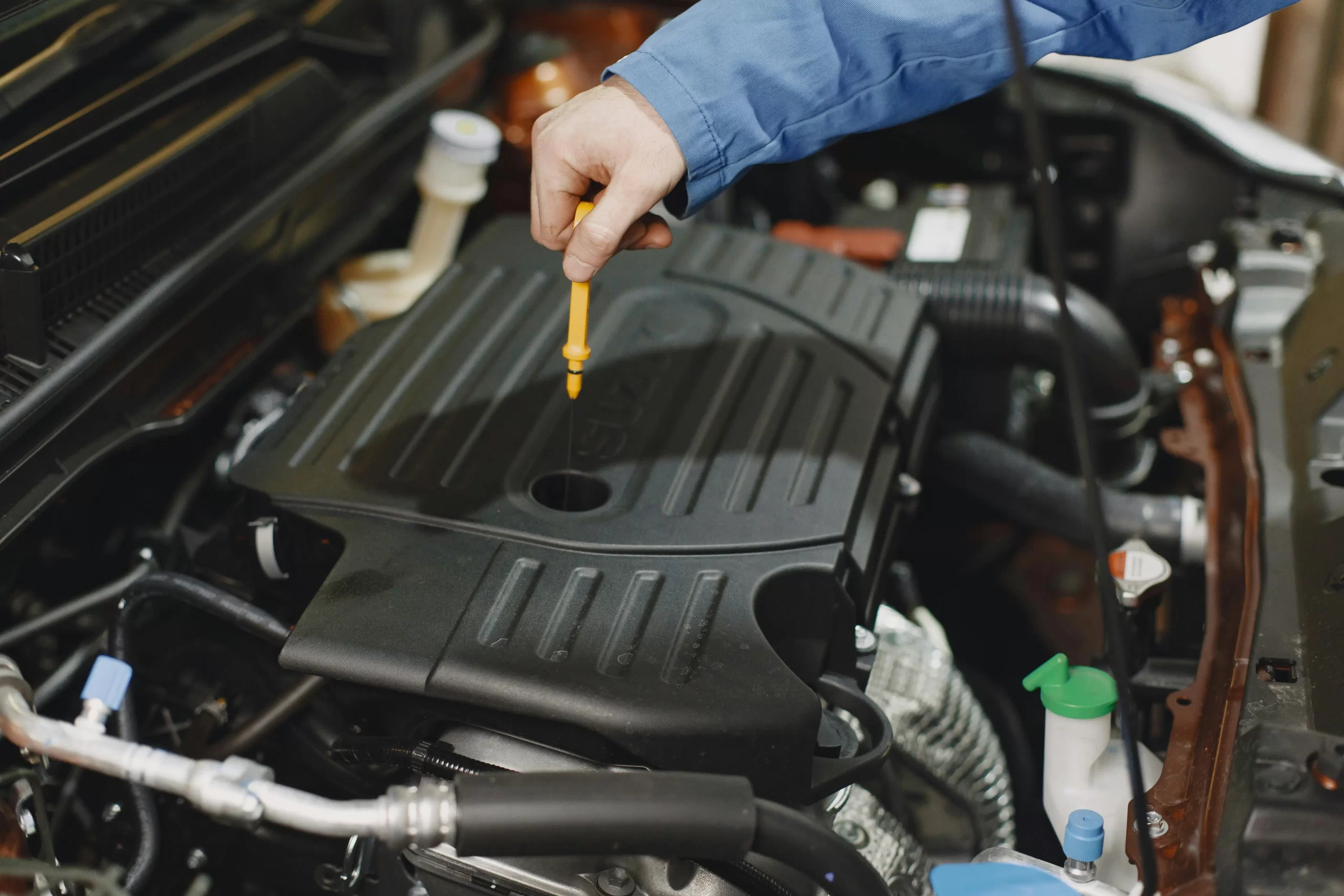
Keeping your vehicle’s fluids at proper levels is one of the easiest yet most important maintenance tasks you can perform. This comprehensive guide will walk you through checking and topping off all vital fluids in your car, helping you prevent costly repairs and keep your vehicle running smoothly.
Why Fluid Maintenance Matters
Regular fluid checks:
- Prevent engine damage and overheating
- Maintain proper lubrication of moving parts
- Ensure safe braking and steering
- Extend the life of your vehicle
- Improve fuel efficiency
Essential Fluids to Check Monthly
1. Engine Oil
Function: Lubricates engine components to prevent friction damage
How to Check:
- Park on level ground and wait 5 minutes after turning off engine
- Locate and remove the dipstick (usually yellow handle)
- Wipe clean, reinsert fully, then remove again
- Check level between MIN and MAX marks
- Note oil color (should be amber, not black)
Topping Off:
- Use manufacturer-recommended oil type
- Add small amounts (1/4 quart at a time)
- Never overfill beyond MAX line
2. Coolant (Antifreeze)
Function: Regulates engine temperature
How to Check:
- Only check when engine is completely cool
- Locate translucent coolant reservoir
- Verify level between MIN and MAX marks
- Inspect for proper color (usually green, orange, or pink)
Topping Off:
- Use 50/50 coolant-water mix
- Never remove radiator cap when hot
- Address frequent low levels immediately
3. Brake Fluid
Function: Transfers brake pedal pressure to wheels
How to Check:
- Locate small reservoir near firewall
- Check level against marked indicators
- Fluid should be clear or light yellow
Topping Off:
- Use DOT specification from owner’s manual
- Never mix different types
- Consider professional service if frequently low
4. Power Steering Fluid
Function: Assists with easy steering
How to Check:
- Locate reservoir (often marked with steering wheel icon)
- Check level with dipstick or markings
- Fluid should be clear or light reddish
Topping Off:
- Use manufacturer-specified type
- Address leaks promptly
- Never overfill
5. Windshield Washer Fluid
Function: Cleans windshield for visibility
How to Check:
- Locate blue-capped reservoir
- Check level visually or with dipstick
Topping Off:
- Use all-season formula
- Consider bug remover in summer
- Never use plain water in winter
6. Transmission Fluid
Function: Lubricates transmission components
How to Check:
- With engine running and warm, shift through gears
- Locate dipstick (often red handle)
- Check level and condition
- Should be pink/red and not smell burnt
Topping Off:
- Use exact specification from manual
- Consider professional service for changes
Fluid Safety Tips
- Always work in well-ventilated area
- Use funnels to prevent spills
- Clean up spills immediately
- Store fluids properly sealed
- Dispose of old fluids responsibly
When to Seek Professional Help
Consult a mechanic if you notice:
- Rapid fluid loss between checks
- Milky or contaminated fluids
- Persistent leaks
- Unusual noises after topping off
- Warning lights that remain on
Creating a Fluid Maintenance Routine
- Check all fluids monthly
- Top off as needed
- Record levels and dates
- Note any changes in condition
- Schedule professional flushes per manufacturer recommendations
By following this simple maintenance routine, you’ll keep your car running smoothly and catch potential problems before they become serious. Regular fluid checks take just minutes but can save you thousands in repair costs.






Leave a Reply